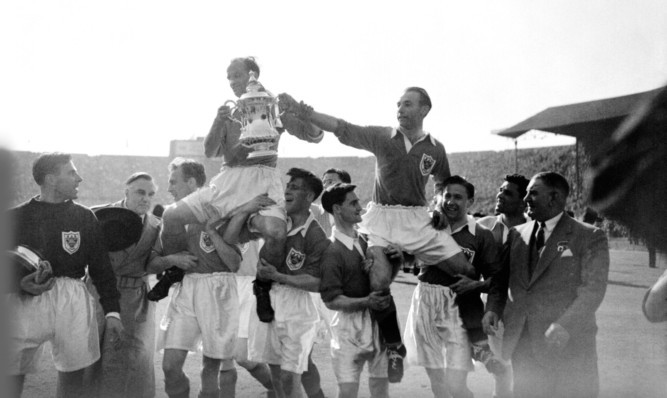
Two of the most iconic matches ever played at Wembley took place during the year in which the Queen was crowned.
The 1953 FA Cup Final, renamed “The Matthews Final” in honour of the man who dominated the game, was played just a month before Her Majesty’s Coronation and was the first football match ever attended by the reigning monarch.
Later that year, Hungary “The Mighty Magyars” humbled England 6-3 on their own turf, becoming the first foreign team to win under the Twin Towers.
Back in the early 50s, football was beginning to dominate the sporting culture of post-war Britain.
There were sky-high attendances around the country and the game’s broadening appeal was emphasised by the still-to-be-crowned Queen Elizabeth II’s presence in the Royal Box.
https://youtube.com/watch?v=NgPfwYqhmA0Blackpool%E2%80%99s
Stanley Matthews, at 38, was trying to avoid a hat-trick of Cup Final defeats, having been on the losing side in both 1948 and 1951.Most believed it was his last chance to win the game’s oldest competition but yet another defeat seemed on the cards as Nat Lofthouse scored for Bolton inside 75 seconds and the Trotters went on to open up a 3-1 lead.
They were still in front going into the final quarter then Matthews took charge.
Against an increasingly-tiring defence, he swept majestically past Bolton’s left-back Ralph Banks and lifted a cross to the far post, where Stan Mortensen hooked the ball in for his second of the game.
Mortensen struck again for his hat-trick three minutes from the end with an exquisitely-struck free-kick to tie the score at 3-3.
In injury-time, Matthews beat Banks once more and pulled the ball back for Bill Perry to seal one of the greatest comebacks ever seen in a final.
It seems quite harsh on hat-trick hero Mortensen to have gained so little acknowledgement for his feat, but the players knew who’d won them the cup and it was Matthews they carried shoulder high from the field.
In those days, the Cup Final was English football’s biggest occasion of the year and lifting that trophy meant far more than winning the league.
Arsenal were Champions that year, edging the title away from Preston North End on goal average after both clubs finished on 54 points.
In those days when two clubs ended level, the order was determined by dividing goals scored by goals conceded and the Gunners won it by .099 of a goal!
In November of Coronation Year, English football changed forever when the Hungarians gave England a drubbing in their own backyard.
Matthews and Mortensen were in manager Walter Winterbottom’s line-up that day, along with Billy Wright and Alf Ramsey.
The Hungarian team had been created by Deputy Sports Minister Gusztav Sebes and were the world’s first exponents of “total football”.
Most of their players were from the state-sponsored army team Honved and they had a fitness regime that made English clubs look like non-league part-timers.
They had a deep-lying centre-forward called Nandor Hidegkuti.
It was a position English football had never dealt with and didn’t know how to.
The Hungarian team was unbeaten since May, 1950, and had won the 1952 Olympics.
The assumption that English players were technically and physically superior to their foreign counterparts was blown apart that day.
Hideguti scored a hat-trick and Ferenc Puskas scored twice as the Hungarians stormed into a 6-3 lead on the hour. They eased off after that to spare England the humiliation.
The result sent a shockwave through English football. For the first time, managers and coaches started to look to the Continent for tactical and training advances.

Enjoy the convenience of having The Sunday Post delivered as a digital ePaper straight to your smartphone, tablet or computer.
Subscribe for only £5.49 a month and enjoy all the benefits of the printed paper as a digital replica.
Subscribe